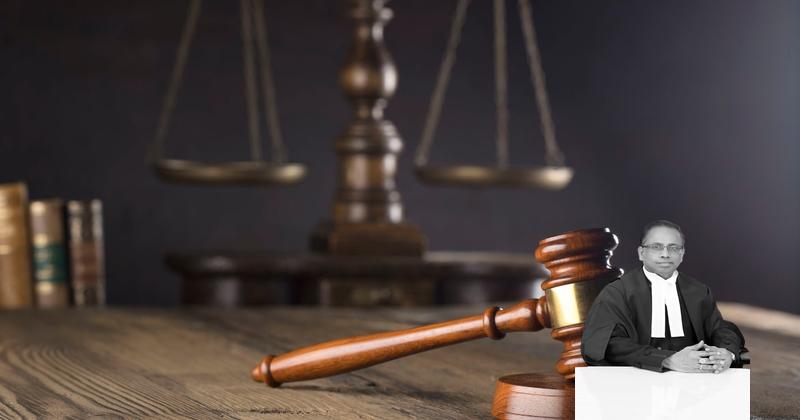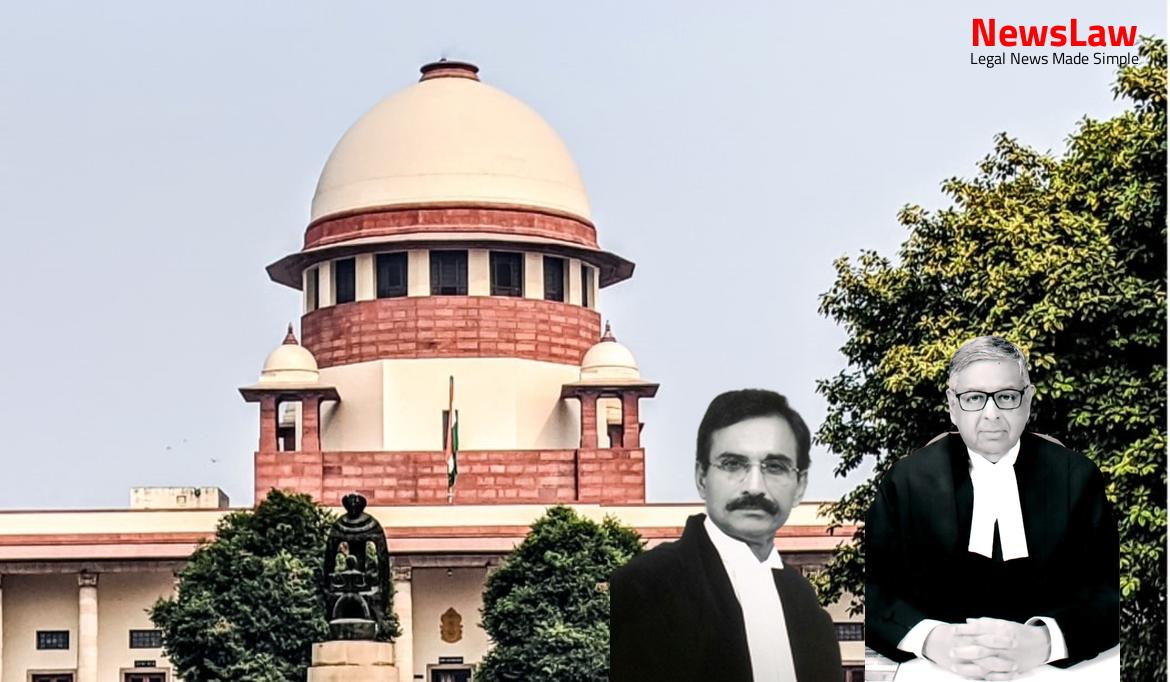In the legal realm, the recent case under scrutiny delves into the delicate balance of appellate court decisions and the extent to which the High Court can interfere with factual findings made by lower courts. The case highlights the importance of established legal principles in assessing evidence and the need for consistency in judicial rulings. Join us to explore the intricacies of legal analysis in appellate court judgments.
Facts
- The plaintiff filed a suit seeking perpetual injunction against the defendants interfering with the possession of the plaint schedule property.
- The defendant No.1 was enjoying the properties through a guardian since a young age.
- The defendant No.1 sold part of the land to Parvatham Ammal who later sold it to Subban Asari.
- The plaintiff claimed ownership and possession of the property, paying kist for 40 years.
- Evidence and pleadings were presented by both parties before the trial court.
- The trial court found in favor of the defendant, stating that the plaintiff failed to prove possession over the suit property.
- The defendant disputed payment of kist by the plaintiff and claimed possession and engagement in agriculture on the land.
- The plaintiff appealed the decision to the District Judge, leading to the eventual appeal before the High Court.
Also Read: Supreme Court Upholds Rejection of Plaint Under Order VII Rule 11 of CPC: A Critical Analysis
Arguments
- The petitioner argues that the substantial question of law framed by the High Court was not answered, especially in a suit for bare injunction where declaratory relief is not always necessary.
- The petitioner contends that the judgment of the High Court should be set aside, and the lower appellate court’s judgment should be restored.
- The defendant No.1 attempts to support the High Court’s judgment by referring to the original claim in the plaint and the evidence presented during the trial.
- The defendant filed a Second Appeal under Section 100 of the Civil Procedure Code before the Madras High Court, challenging the District Judge’s judgment.
- The High Court framed a substantial question of law regarding the maintainability of a suit without a prayer for declaration when the plaintiff’s title is disputed.
- After considering the rival contentions, the High Court set aside the District Judge’s judgment based on the substantial question of law framed.
- The petitioner emphasizes that the evidence presented in the trial was not properly appreciated by the lower appellate court, leading to the High Court’s intervention.
- The petitioner relies on established legal principles to argue against the High Court’s interference in factual findings made by the lower appellate court.
- The petitioner urges for the dismissal of the appeal, highlighting the defendant No.1’s possession of the property both before and after the suit.
- The District Judge’s decision was influenced by the kist receipts presented as evidence by the plaintiff, which led to the acceptance of the plaintiff’s claim of possession.
Also Read: Validity of Debt and Enforcement of Section 138 NI Act
Analysis
- In the case of Ramathal versus Maruthathal & Ors. (2018) 18 SCC 303, the High Court’s interference with the question of fact in the Second Appeal was questioned.
- The plaintiff’s case was accepted without the necessity of seeking a declaration as the defendant did not assert their right of ownership.
- The decisions in P. Velayudhan & Ors. versus Kurungot Imbichia Moidu’s son Ayammad & Ors. (1990) Supp. SCC 9 and Tapas Kumar Samanta versus Sarbani Sen & Anr. (2015) 12 SCC 523 state that the High Court should not interfere with findings of fact made by the first appellate court in a Second Appeal.
- In the case of Ramji Rai & Anr. versus Jagdish Mallah (dead) thr. Lrs. & Anr. (2007) 14 SCC 200, it was held that in certain circumstances, a suit for possession alone would be sustainable without the need for a declaration.
- The limited scope for reappreciating evidence or interfering with findings of fact by the trial court and first appellate court in a second appeal under Section 100 of the Civil Procedure Code is reaffirmed.
- The High Court’s breach of this settled position in the instant case is under scrutiny due to divergent findings by the Trial Court and the First Appellate Court.
- The case of Ram Daan (dead) through Lrs. versus Urban Improvement Trust. (2014) 8 SCC 902 involved a suit for permanent injunction where possession since 1942 was pleaded by the plaintiff and partially admitted by the defendant from 1965.
- Both courts arrived at a concurrent finding of fact disbelieving the evidence of witnesses.
- High Court’s interference was deemed justified when the court had perversity in findings not based on any material or had appreciations of evidence suffering from material irregularity.
- High Court’s assessment of factual aspects does not necessarily mean reappreciation of evidence.
- Plaintiff failed to establish possession of the suit schedule property.
- High Court’s decision was in line with the fact situation and the trial court’s opinion that plaintiff did not prove exclusive possession for entitlement of permanent injunction.
- The first appellate court heavily relied on kist receipts for possession, leading to divergent findings with the trial court.
- High Court can approve one of the divergent views taken by the lower courts without reappreciating evidence unless it is found to be perverse.
Also Read: Enlargement on Bail in Illegal Mining Case
Decision
- The appeal is dismissed with no order as to costs
- Pending applications, if any, shall stand disposed of
Case Title: BALASUBRAMANIAM Vs. M.AROKIASAMY (DEAD) THR. LRS. (2021 INSC 438)
Case Number: C.A. No.-002066-002066 / 2012



